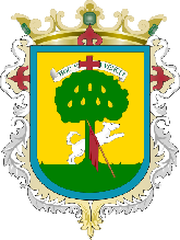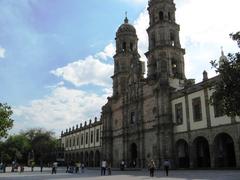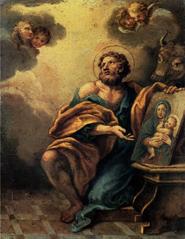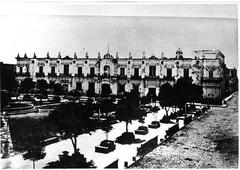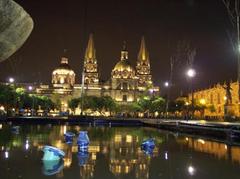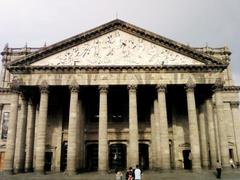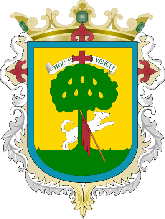
Comprehensive Guide to Visiting Zapopan, Guadalajara, Mexico
Date: 16/08/2024
Introduction
Zapopan, nestled in the Guadalajara Metropolitan Area, is a dynamic city with a deep historical legacy and a vibrant present. Known as the “place of sapote trees” in Nahuatl, Zapopan has been a significant settlement since pre-Hispanic times and has grown into a cultural, religious, and modern hub (Wikipedia). The city is celebrated for the Basilica of Our Lady of Zapopan, the annual UNESCO-recognized Romería pilgrimage, and its blend of historic and contemporary attractions. This guide will help you explore Zapopan’s key sites, practical visitor information, travel tips, and cultural highlights for a truly memorable visit.
Table of Contents
- History of Zapopan
- Religious and Cultural Significance
- Essential Visitor Information
- Top Attractions
- Annual Events & Tours
- Travel Tips & FAQs
- Conclusion
- References
History of Zapopan
Pre-Hispanic and Colonial Origins
Zapopan’s roots stretch to ancient times, with the region inhabited by Zapotec, Nahua, and Maya groups before the arrival of the Aztecs. The city’s name comes from the Nahuatl “tzapopan,” meaning “place of sapotes” (Wikipedia). By the 16th century, Zapopan was a notable indigenous settlement. The Spanish arrived in 1530, led by Nuño de Guzmán, and established formal control after the Mixtón War in 1541. The spiritual transformation of the region was marked by the introduction of the image of Our Lady of the Conception, later revered as the Virgin of Zapopan (Wikipedia).
Key Historical Events
Zapopan was elevated to the seat of one of Jalisco’s 26 departments in 1824 and achieved Free Municipality status in 1917. Its growth culminated in city status in 1991, signifying 450 years since its foundation. The city has witnessed pivotal moments in Mexican history, particularly during the War of Independence and the Mexican Revolution, events that have shaped its character and identity (Wikipedia).
Religious and Cultural Significance
Basilica of Our Lady of Zapopan
A must-see landmark, the Basilica of Our Lady of Zapopan is a 17th-century Franciscan sanctuary that houses the venerated wooden statue of the Virgin of Zapopan (Catholic Shrine Basilica). The basilica is the heart of Zapopan’s religious life and draws millions of pilgrims every year. Its architecture and spiritual significance make it a central highlight of any visit.
- Opening Hours: 6 AM – 8 PM daily.
- Admission: Free (donations appreciated).
Romería Pilgrimage
The Romería de la Virgen de Zapopan is one of Mexico’s largest religious events. Each October 12, the sacred statue is paraded from Guadalajara Cathedral to the basilica, accompanied by dancers, music, and a sea of pilgrims. This tradition, recognized by UNESCO as intangible cultural heritage, embodies Zapopan’s enduring faith and festive spirit (Catholic Shrine Basilica).
Essential Visitor Information
Visiting Hours and Ticket Prices
- Basilica of Our Lady of Zapopan: 6 AM – 8 PM, daily. Free entry.
- Centro Cultural Universitario: Tuesday–Sunday, 10 AM – 6 PM. Entry: $50 MXN.
- Huichol Cultural Center: Monday–Friday, 9 AM – 5 PM. Entry: $30 MXN (Journey Gourmet).
Accessibility
Zapopan’s main attractions are accessible to visitors with disabilities, and public transportation (buses and taxis) is widely available. The city is easily reached via Guadalajara’s international airport, highways, and rail (Britannica).
Accommodation Options
From luxury hotels to boutique guesthouses and budget hostels, Zapopan caters to all travel styles (How Safe is Mexico).
Top Attractions
Historical and Cultural Sites
- Centro Cultural Universitario: Home to major concert venues and cultural events (Wikipedia).
- Constitution Cultural Center: Offers concerts, theater, art exhibitions, and workshops (Journey Gourmet).
- Huichol Cultural Center: Museum dedicated to the traditional art and culture of the Huichol people (In Guadalajara).
- Arco de Ingreso a Zapopan: An 18th-century triumphal arch marking the entrance to the city (How Safe is Mexico).
- Plaza de las Americas Juan Pablo II: A historic square with monumental sculptures, a kiosk, and lively public gatherings (Mexicanist).
Modern Marvels
- Andares Shopping Mall: A high-end shopping and dining destination favored by locals and visitors alike (Roaming Ramblers).
- Estadio Akron: Home of Club Deportivo Chivas and a venue for the 2026 World Cup (playasyplazas.com).
Nature Escapes
- Bosque Los Colomos: Urban forest park featuring lakes, themed gardens, and walking trails (How Safe is Mexico).
- Barranca de Huentitán: A scenic canyon ideal for hiking and panoramic views (How Safe is Mexico).
- Bosque De La Primavera: Vast forest reserve perfect for mountain biking and outdoor activities (playasyplazas.com).
Food and Gastronomy
Savor classic dishes like birria, tortas ahogadas, and tequila. Top local spots include Karne Garibaldi and Mariscos El Negro (In Guadalajara).
Annual Events & Tours
- Pilgrimage of the Virgin of Zapopan (October 12): Religious processions, traditional dances, and fireworks (ellgeebe.com).
- Guided Tours: Local agencies offer walking and thematic tours covering history, gastronomy, and art.
Travel Tips & FAQs
Essential Tips
- Transportation: Use public transit or rent a car for flexibility.
- Best Time to Visit: November–April (dry season) for pleasant weather and festivals.
- Weather: Mild year-round; rainy season is July–September.
- Safety: Zapopan is generally safe, but standard precautions are advised.
- Shopping: Andares Mall and local markets are excellent for shopping and people-watching (Roaming Ramblers).
Frequently Asked Questions
- What are the basilica’s hours? Open daily, 6 AM – 8 PM.
- Are there entrance fees? Most religious sites are free; cultural centers and museums may charge a modest fee.
- How do I get to Zapopan from Guadalajara? By bus, taxi, or car; about 25 miles from Guadalajara International Airport.
- Is Zapopan safe for tourists? Yes, with usual travel precautions (How Safe is Mexico).
Conclusion
Zapopan stands out as a multifaceted destination where tradition and modernity converge. From the spiritual grandeur of the Basilica and the Romería, to the vibrant culture of its museums and concert halls, to the tranquility of its parks and the flavors of its cuisine, Zapopan promises a rich and rewarding experience for every traveler. Whether you’re here for a festival, a soccer match, or a stroll through historic streets, Zapopan will leave a lasting impression. For up-to-date tips and local recommendations, download the Audiala app or follow us on social media.
